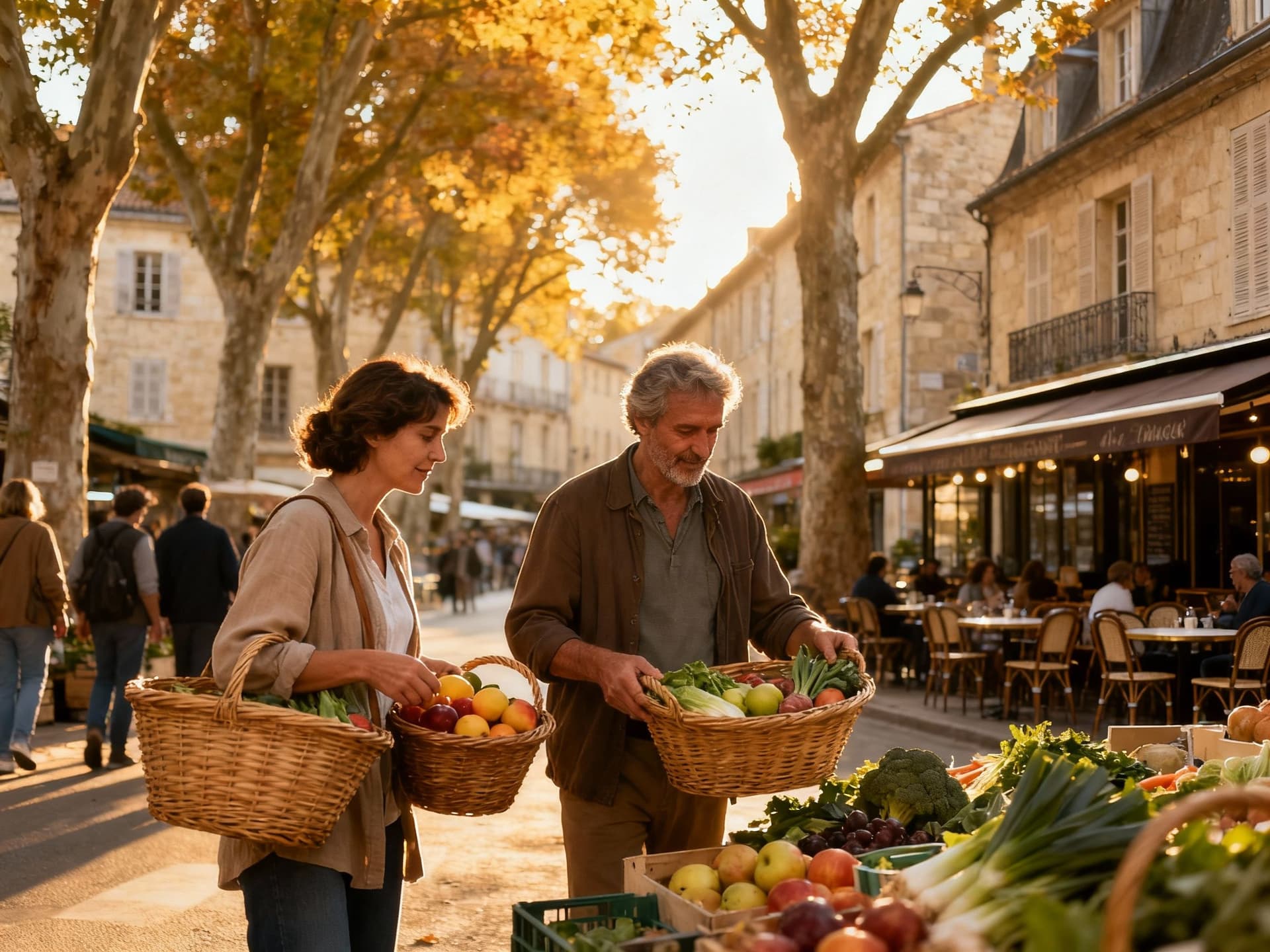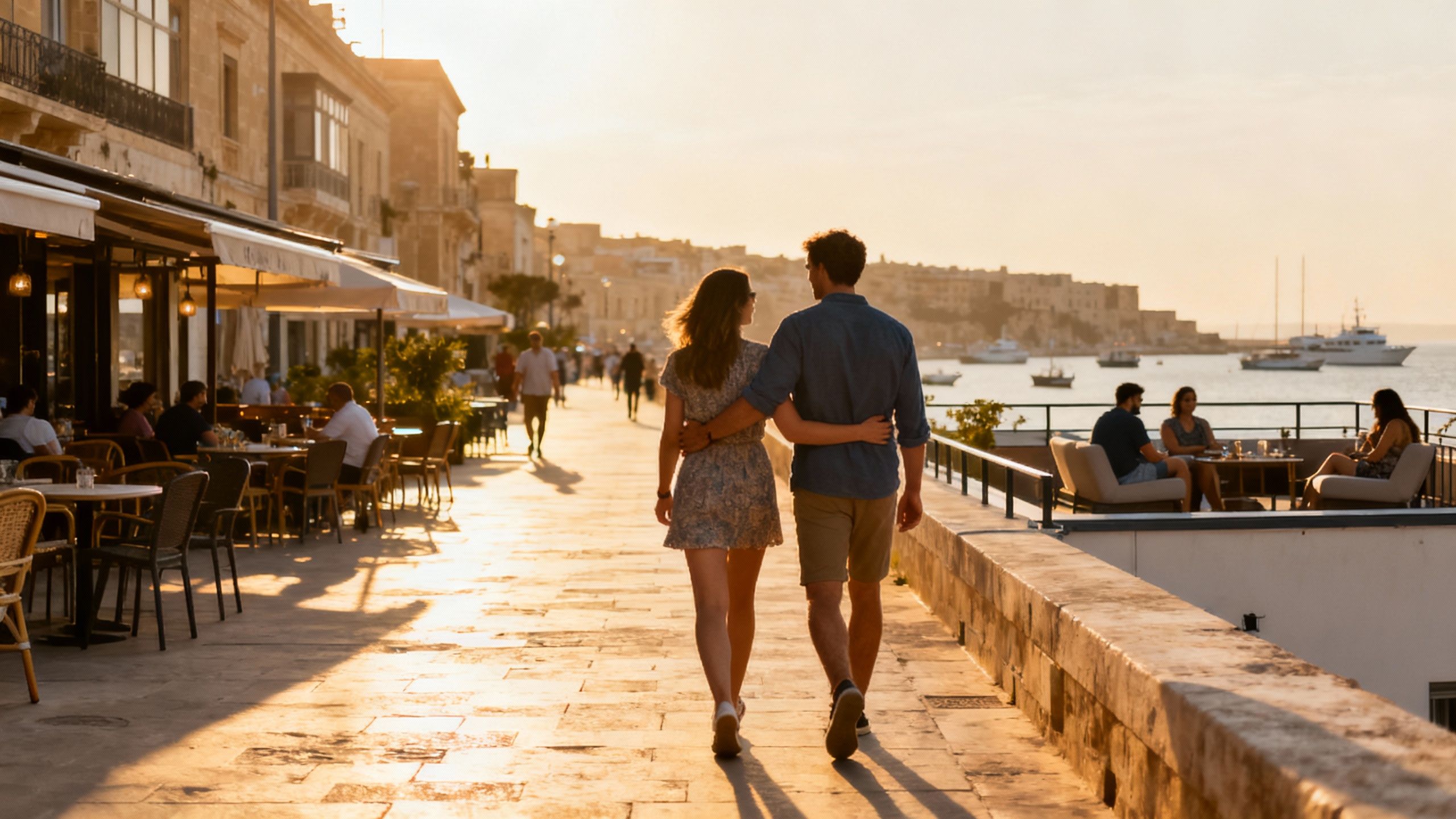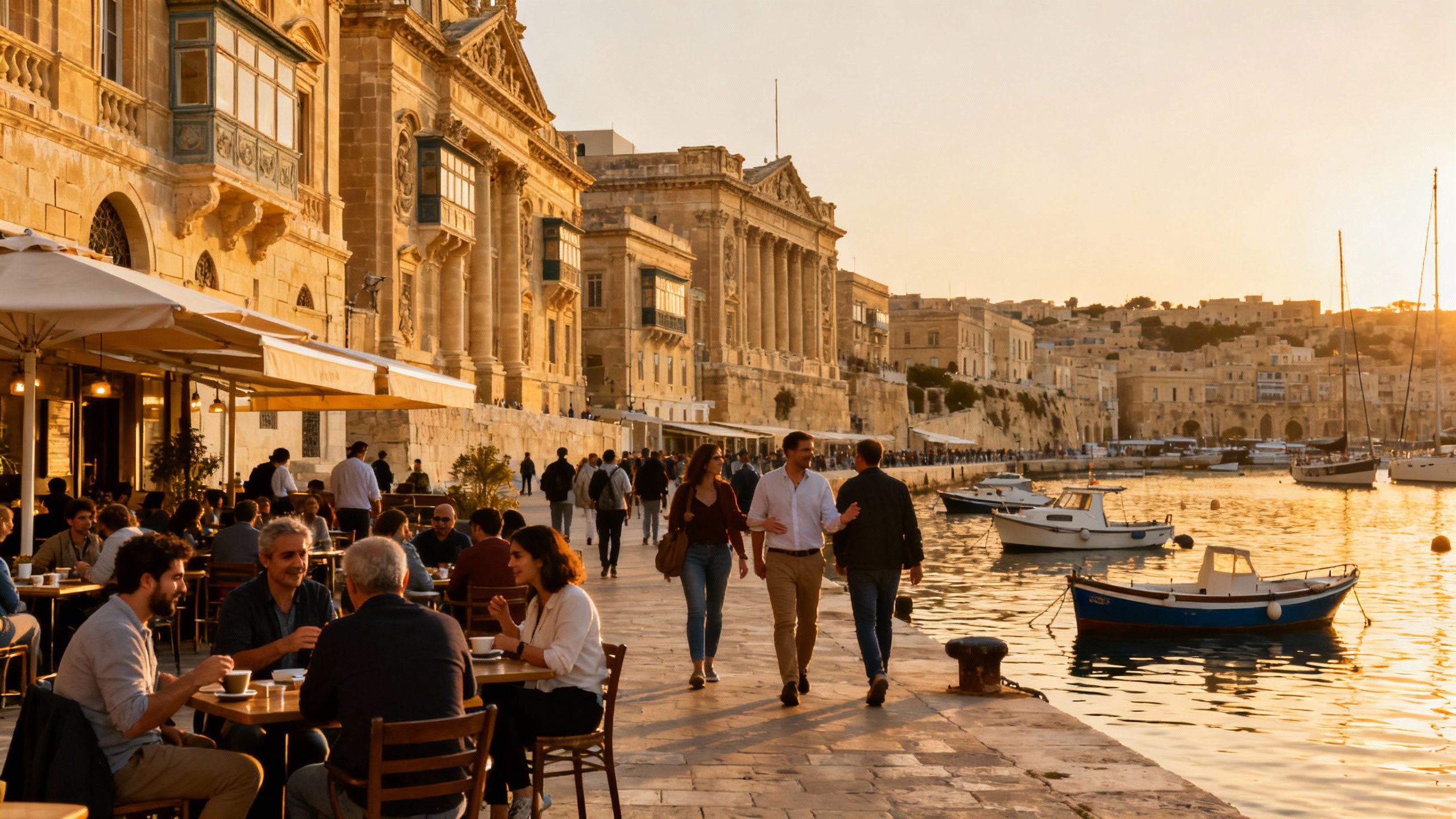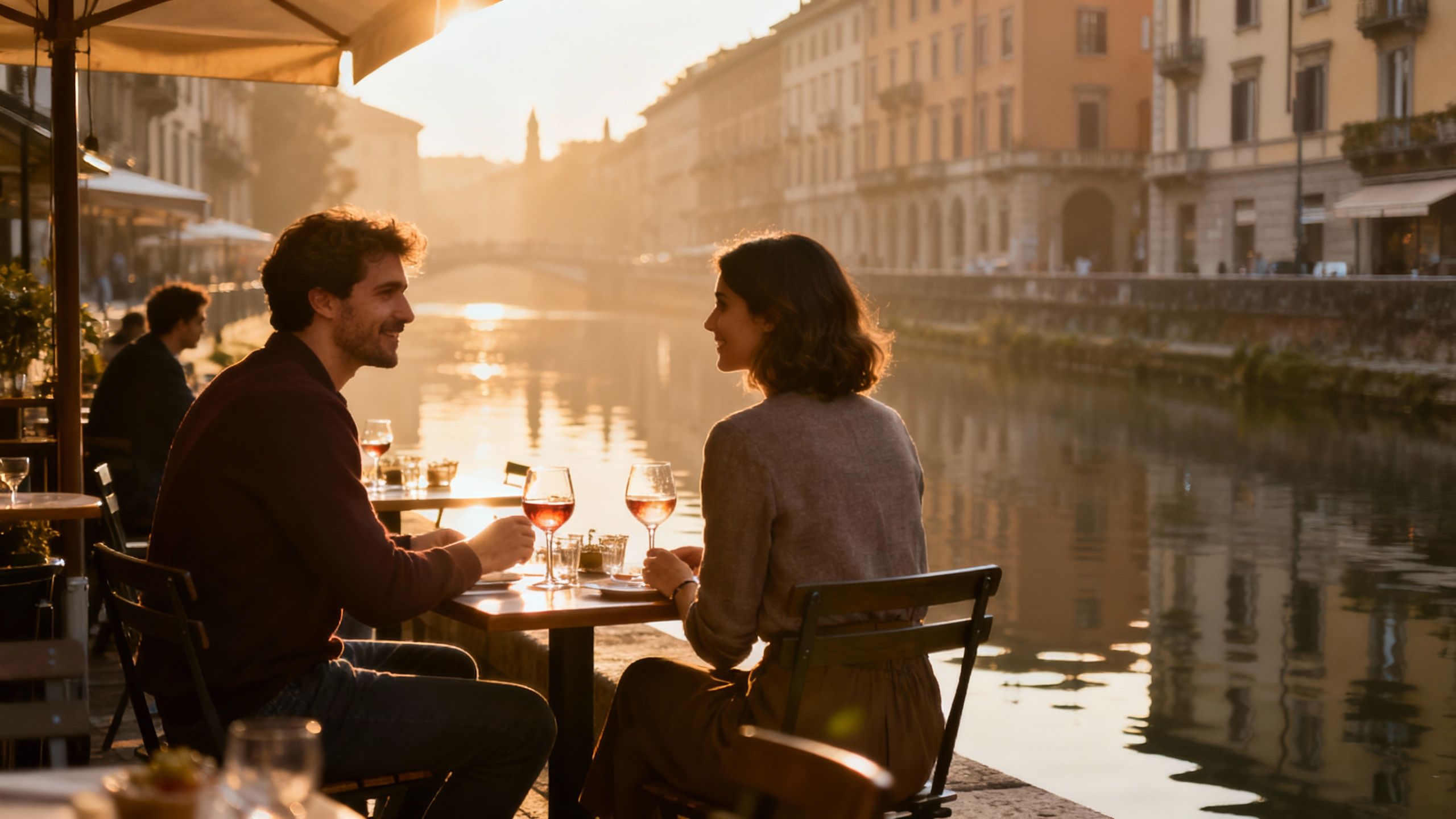Life, Markets and Micro‑Markets: France 2025
France’s daily rituals — markets, cafés, seasonal festivals — shape property desirability; recent notarial data show uneven 2025 recovery, making neighbourhood knowledge essential.
Imagine morning light on a boulangerie window in Lyon’s Croix-Rousse, the smell of beurre noisette and fresh viennoiseries, then a late-afternoon walk along the Garonne in Bordeaux, cafés filling with people debating the day. That sensory routine — markets, short walks, carefully constructed meals — defines why many of us consider France a place to stay, not merely to visit. Yet beneath these calm rhythms lies a market of contrasts: Paris’s concentrated luxury, Bordeaux’s urbane revival, and a countryside renaissance that still surprises even long-term observers. This article pairs that lived-in portrait with decisive market facts so you can fall in love with France and also buy with eyes open.
Living the French Life — what daily rhythms reveal

Daily life in France privileges duration over spectacle: unhurried morning cafés, late market visits, neighbourhood bars where proprietors know names and children share tables. This is true whether you live in Aix-en-Provence where plane trees shade terraces, in Nantes where the river hums with weekend life, or in a village in Dordogne where Saturday markets organise the week. Those daily rituals shape both the kind of property you want and how it will be used — a kitchen worthy of long meals, storage for bicycles, or a small courtyard where plants survive long summers. Appreciating these rhythms helps you match a house to the life you intend to lead, not only the investment you hope it becomes.
Paris vs the rest: concentrated heritage, dispersed opportunity
Paris remains exceptional in both cultural weight and price. The city bundles historic families, global headquarters and rare apartments whose provenance and floor plans are assets in themselves. Outside Paris, value is more heterogeneous: mid-size cities such as Lyon, Bordeaux and Nantes are staging grounds for lifestyle-driven buyers seeking architecture, dining scenes and manageable commutes. Understanding this split matters: a Parisian pied-à-terre buys proximity to institutions; a Provençal farmhouse buys room, land and a different tempo.
Food, markets and the calendar: seasonality that changes how you live
France’s calendar — harvests, market days, fête patronale — dictates weekly rhythms and property desirability. For instance, living near Marché des Capucins in Bordeaux means early Saturdays that shape your kitchen use and social life; in Provence, an autumn truffle or grape harvest lends short, intense bursts of communal activity. These seasonal cadences influence which features matter: a cool cellar for preserves, a well-insulated attic for winter guests, or a south-facing terrace that extends summer evenings. Choose neighbourhoods that suit the seasons you value; real living in France is cyclic and richly textured.
- Markets, cafés and small rituals that define neighbourhood life
- Marché des Capucins (Bordeaux) — Saturday market culture that anchors local life
- Rue Mouffetard (Paris 5ème) — daily boulangeries, small épiceries and after-work gatherings
- Cours Saleya (Nice) — morning produce markets and shaded terraces that shape apartment living
- Place du Marché (Sarlat, Dordogne) — rural market life and the practical needs of country houses
Making the move: practical considerations without the usual clichés

Purchasing in France is a negotiation between lifestyle intent and sober numbers. Recent data show modest national price recovery after earlier corrections, but regional differences are pronounced: some city centres have already stabilised while rural departments register renewed demand from buyers seeking space. Government and notarial transaction indices remain the most reliable measures of movement; they also reveal that buyers who prioritise provenance, adaptive reuse and energy performance frequently secure assets that age well. Use hard data to temper romance, then let neighbourhood character choose between comparables.
Property types and how they support a life in France
A Parisian apartment is often about floor-plan integrity, ceiling heights and an address; a country maison is about garden, outbuildings and provenance; a coastal villa asks for orientation and protection against salt and mistral. Each type requires different stewardship: listed façades need specialist masons, old stone houses benefit from modern insulation strategies, and modern conversions demand careful services integration. When you decide how you want to live — daily markets, hosting dinners, vineyards nearby — choose the typology that makes those activities effortless rather than retrofitted.
Working with local experts who translate lifestyle into value
A measured local agent does more than show properties; they introduce you to the baker, the neighbor who knows the town’s history, and the surveyor who reads old plans. For international buyers, agencies versed in architectural conservation and regional planning will save both time and error. Insist on agents who can produce comparable sales by arrondissement or commune, who understand local DPE (energy) expectations, and who can recommend craftsmen for restorations that respect provenance. Those capabilities turn a house into a life rather than a maintenance obligation.
- Steps to translate lifestyle intent into a solid purchase
- Define the life you want (daily markets, commute tolerance, hosting scale) and list the non-negotiables.
- Gather local comparables and an independent diagnostic (DPE, structural review) before making offers.
- Engage a notaire early to review titles and servitudes; understand any preservation restrictions.
- Plan for stewardship: budget artisanship, seasonal upkeep and a modest contingency for discovery repairs.
Insider knowledge — what expats learn after the move
Expat experience often begins with small surprises: the scale of municipal bureaucracy, the cadence of school terms, and the way neighbours become allies in village life. Language helps, but engagement matters more: regular market conversations, local association membership and attending fête days accelerate integration and reveal micro‑markets before they appear in data. Seasonality will shape use and maintenance — damp winters ask for heat strategies, summer terrasses demand shade — and those lived details change how you value a property over time.
Cultural cues that change where you choose to live
Local expectations — from Saturday market rituals to the importance of street-level shops — mean that a property’s location within a town can matter more than its square metres. For example, a rue with an old épicerie and a well-regarded boulangerie will sustain daily life and resale appeal; a house half a kilometre from village services not only alters errands but community integration. Small distances matter. Learn the micro-geography of the places you visit before you bid.
Long-term life and practical sustainability
Think like a steward: whether you buy a Paris pied-à-terre or a restored farmhouse, maintenance plans and artisan relationships preserve value. Energy performance upgrades, sympathetic roof repairs and preserved interior proportions are investments that reward both living quality and market standing. Many buyers tell us that once the initial administrative hurdles pass, the real work is curating a life around the property — the friends you make, the markets you return to, the local craftsmen you keep on speed dial.
- Common expat oversights to avoid
- Underestimating recurring maintenance for older masonry and shutters
- Ignoring micro-location: proximity to market, doctor, school and transport
- Overpaying for romantic views without checking planning restrictions that limit future use
Conclusion: France rewards patience and cultivated choices. If you seek a life shaped by markets, meals and measured company, then match neighbourhood rituals to your daily priorities, lean on notarial and local market data, and work with agents who value architectural integrity. Begin by listing the life you intend to live, then ask an advisor to translate that list into comparables, diagnostics and stewardship plans. Fall in love deliberately; buy with the care a historic property deserves.
Having moved from Stockholm to Marbella in 2018, I help Scandinavian buyers navigate Spanish property law, restoration quality, and value through authentic provenance.


